
Aw Crash Bandicoot, you’ll always be a solid number ten in our hearts. The tenth best selling game on PS1 that is. And while that might sound like “damning with faint praise”, it slots Crash Bandicoot directly in between Metal Gear Solid (at the #9 slot) and Resident Evil 2 (at #11). So pretty impressive really! That being said, it’s hard to shake the feeling that Crash Bandicoot was a bit of an ‘also-ran’ when stacked up alongside bona fide platforming legends like Mario, Sonic, Donkey Kong Country, etc. For me this notion extends partly from Sony’s famous “U R Not E” ad campaign (“You Are Not Ready. GET IT, LOLOLOL!? Great jorb Sony, you really know how to relate to them youts) which ran as part of the PlayStation launch. Several of these ads besmirched competing game consoles in the face of Sony’s “clearly superior technology”. One notable example featured a guy in a Crash Bandicoot costume standing outside of Nintendo’s headquarters in Redmond trash talking Mario by name with a bullhorn. (oh the 1990s, how I miss your ‘edgier than thou’ marketing strategies). These ads were memorable (and admittedly kind of funny), but … they were also running in the same year that Big-N released a diminutive little title by the name of Super Mario 64. And I mean Crash Bandicoot was good (number 10!) but … it’s not like it completely set the 3D platforming world on fire in the same way that “Plumber Boy-Mustache Man” was doing at that exact moment. So in hindsight those ads really feel like “all hat and no cattle” as we (never) say out here in cattle ranch country. Still, we can’t exactly scoff at the legacy of Crash Bandicoot (numero diez, baby!). It was certainly significant enough to warrant the release of this modern remake collection, featuring the titular Bandicoot’s first three games to have appeared on the PS1. So let’s bounce right onto that first title!
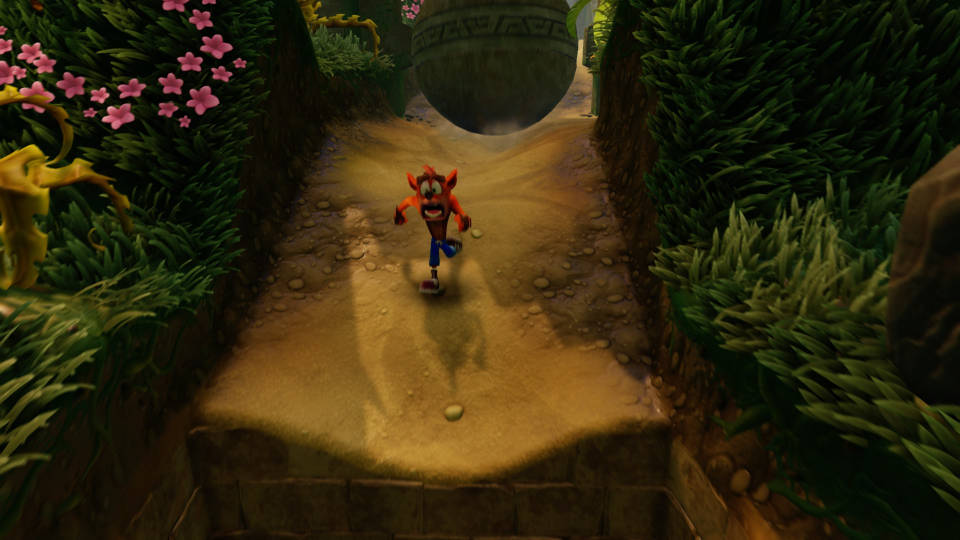
Right from the top, lets address some plot and story elements as these are really the least interesting parts of the game. Once upon a time in the almost certainly fictional land of Tasmania, there lived a mad scientist by the name of Doctor Neo Cortex. In order to achieve his goals of world domination, Dr. Cortex used his diabolical ‘Evolvo-Ray’ to change local wildlife into genetically modified super-freaks capable of carrying out his nefarious plans (several of the bosses you fight are the result of these modifications). When he attempted to convert a captive Bandicoot, the test subject was deemed to be a failed experiment and was rejected outright (presumably Dr. N. Cortex worried about intellectual property infringement, as this subject was clearly a rip-off of the Tasmanian Devil). And thus began the legend of Crash Bandicoot. The second Bandicoot test subject selected for conversion was of course Crash’s lovely lady friend Tawna! Oh no! So yeah, obviously it’s time for Crash to rescue Tawna. Hey it ain’t Shakespeare folks, so let’s dig into some aspects of the game that weren’t conceived of and hastily written down on the back of a cocktail napkin while taking a crap at an Outback Steakhouse (in this extended analogy, “She Blinded Me With Science” was lightly playing over the in-house hi-fi).
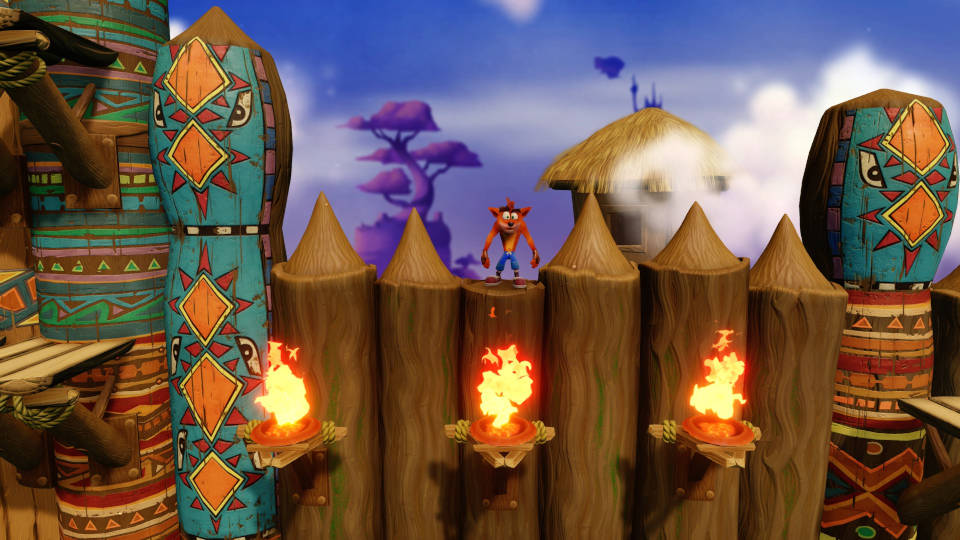
SCI-ENCE! … Oh sorry, I just got carried away in a moment there. Any hoo, as I mentioned at the top, the version we’re talking about here is the modern remake of Crash Bandicoot included in the Crash Bandicoot N. Sane Trilogy compilation. Vicarious Visions has done a tremendous job updating this title for a modern audience, using an approach they dubbed as a “Remaster Plus”. They didn’t fully remake the original title but rather used their own proprietary game engine to rebuild all assets and gameplay directly from Naughty Dog’s original models and geometry. You wouldn’t necessarily know that from looking at the game though. The remastered (plus) graphics and updated audio are impeccably implemented throughout. The end result is that you have a game which looks and sounds thoroughly modern(ish), combined with gameplay which skews distinctly towards the retro. In point of fact, this disconnect can sometimes feel slightly jarring. In order to determine why that is though, we need to step into the wayback machine and talk about Crash from a historical perspective.
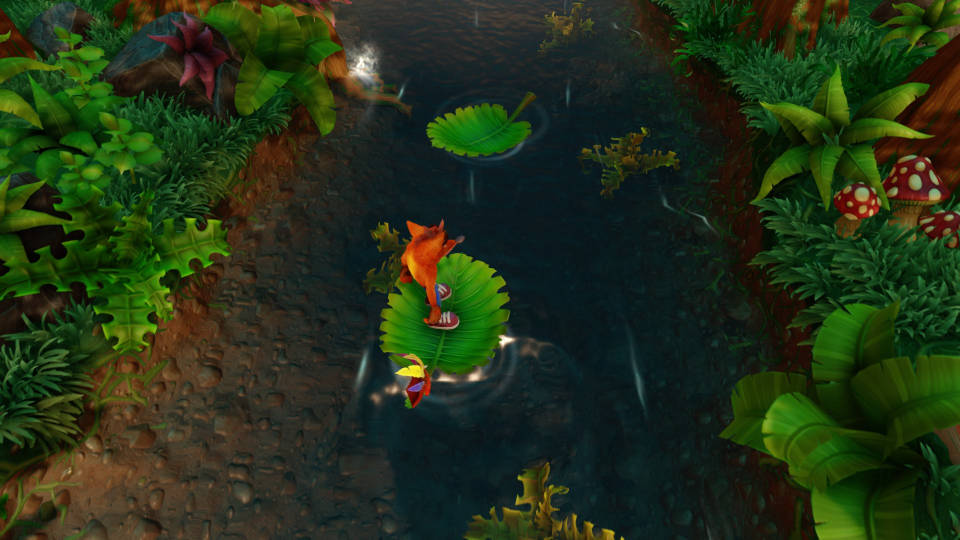
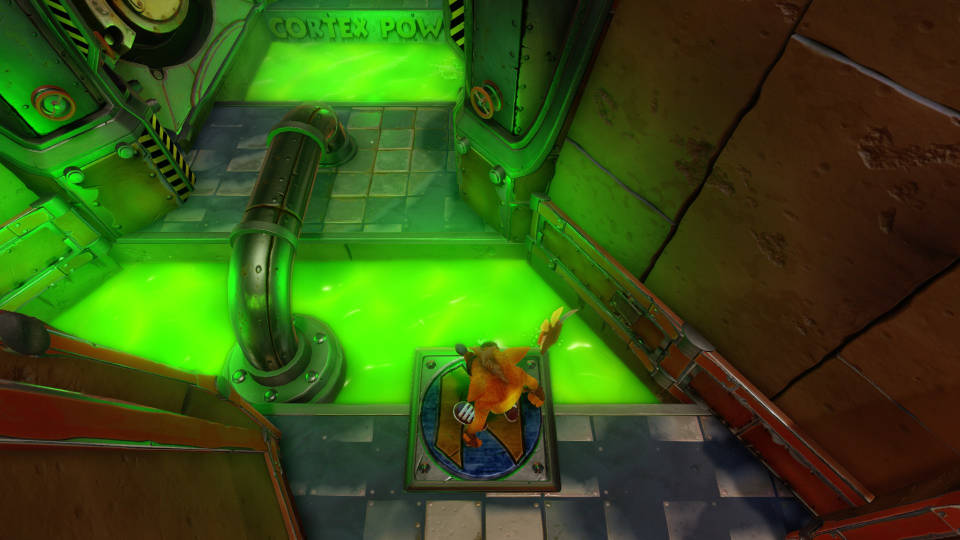
As I’ve alluded, Crash Bandicoot hails from the very early days of 3D platformers, a primordial era in which developers were still figuring out how to make these games feel intuitive and/or good. Mario 64’s solution to this conundrum was to implement a (literal) camera system which allowed the player to alter the game’s perspective at will as they guided Mario through all manner of 3D spaces on his way to victory. Crash Bandicoot’s approach … was far less innovative. This is technically a 3D game being as it does feature 3D rendered objects and the levels are kind of presented as three-dimensional spaces … but only just. In terms of 3D movement, Crash Bandicoot’s mechanics can be broadly categorized into sections where you’re traversing levels in strictly horizontal or vertical fashion … pretty much exactly as you would in a 2D platformer, and sections where you’re running away from or towards the screen … just like many 2D games had been doing since the 80’s. What you won’t find are sections in which you have full freedom of movement to do these things all at once and at will. Part of this issue stems from the fact that all the levels in Crash Bandicoot are on rails, some literally and some figuratively. What I mean is all the levels here are structured in the form of narrow, fixed perspective corridors. There are no ‘wide open sections’ in which to wonder at the technological marvel that is true 3D freedom of movement (and at the risk of beating a dead horse, this was something that Mario 64 featured immediately upon starting the game). It’s not that the gameplay in Crash Bandicoot is bad, it just feels more like a half-step towards the modern age of 3D gaming rather than some revelatory new dawn.
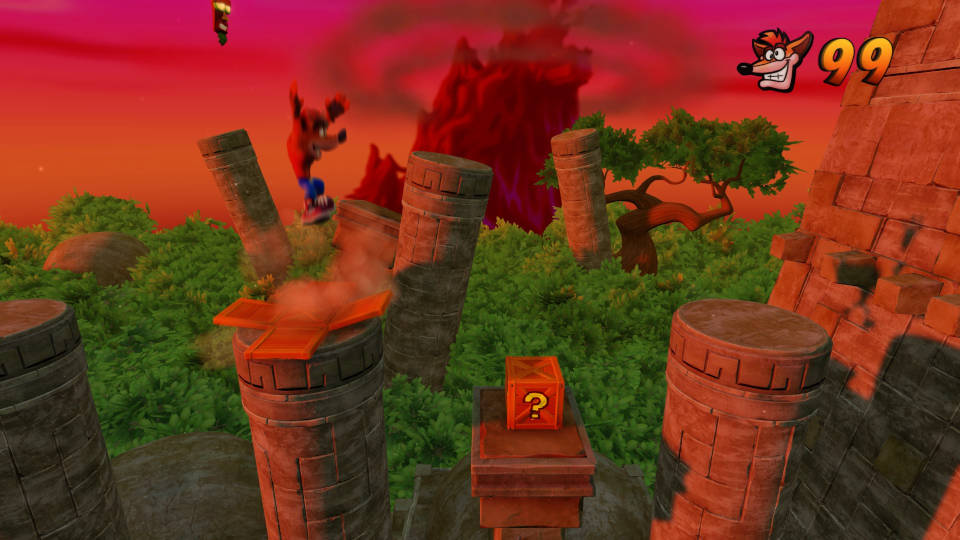
If that all sounds like I’m being unfairly critical of Crash Bandicoot, well … you may have a point. So now that we have some historical perspective, let’s return to the present day so we can examine this game in a more objective fashion. Obviously the Crash Bandicoot approach to 3D gaming is not something that caught on in a big way. But because it was trying something a little different and experimental, it has this unique style of play that you don’t see in a lot of other games. Once you get used to the idea of a 3D game that only focuses on a single axis of movement at a time, it’s kind of fun and interesting. It’s undoubtedly a simplified approach, but the controls themselves are fine-tuned and natural feeling. For my money the primary measure of a quality platformer rests on a foundation of smooth intuitive controls, and to that end Crash Bandicoot succeeds more often than not.
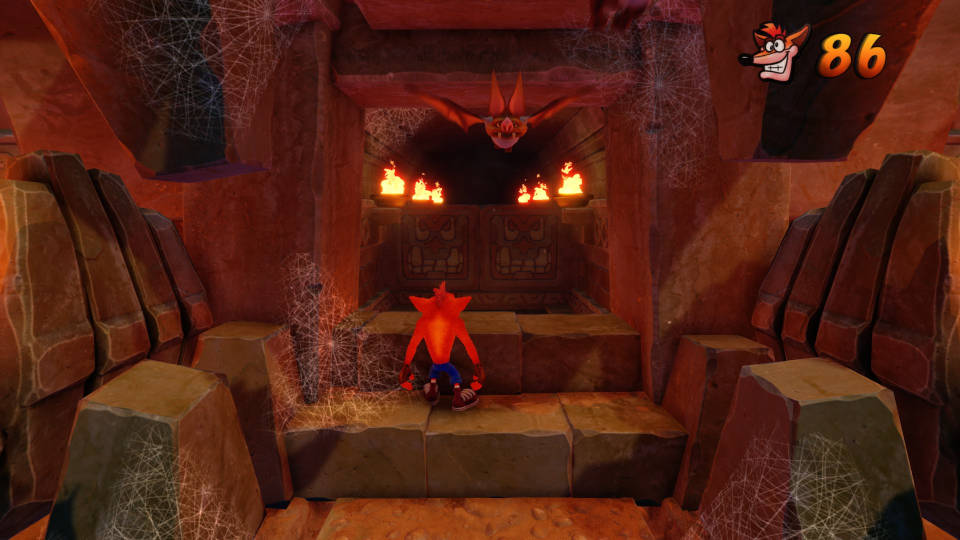
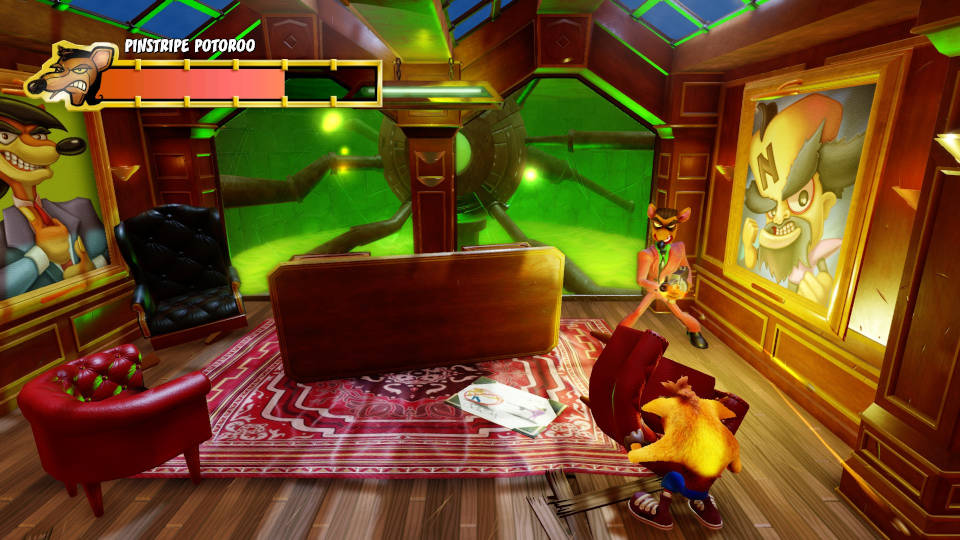
There are of course some missteps along the way. The first complaint one hears leveled at this game tends to be in reference to those stages where you’re running toward the screen for the duration, racing away from giant rolling boulders like a marsupial Indiana Jones. Of all the levels in the game, these levels do gesture more clearly towards some ‘experimental’ mechanics they were trying out, but I dunno … it’s not like they’re terribly difficult levels; they just rely on an unfamiliar approach. That’s not to say they’re great levels either. I think ‘run blindly towards the screen’ was rightfully relegated to the dustbin of history in terms of 3D game design, but for the purposes of Crash Bandicoot, meh … those levels could have been a whole lot worse. No, for me the most insidious mechanical issue was something a lot more subtle. I’ve mentioned how several levels play almost exactly like a 2D platformer. Almost. They are in fact 3D levels in that each platform does actually have a bit of depth which allows you to move to-and-fro along the z-axis (i.e. slightly towards or away from the screen). This can become an issue when the platform drops away on either side of the z-axis. So for instance if you move too far away from or towards the screen, you fall off the platform and lose a life. Or if you jump to another platform and move slightly towards the screen, you won’t land on the platform and lose another life. It’s like you’re playing through stages of a pseudo-2D platformer which unexpectedly sneaks in these 3D ‘gotchas’. This is what seems like some poorly thought out design to me. Like … if you’re going to fall back on lazy 2D platforming tropes in the midst of your ‘cutting edge 3D platformer’, maybe don’t punish the player for playing it like a 2D platformer. It wasn’t a common issue during my playthrough, but it was always unexpectedly frustrating when it did occur.
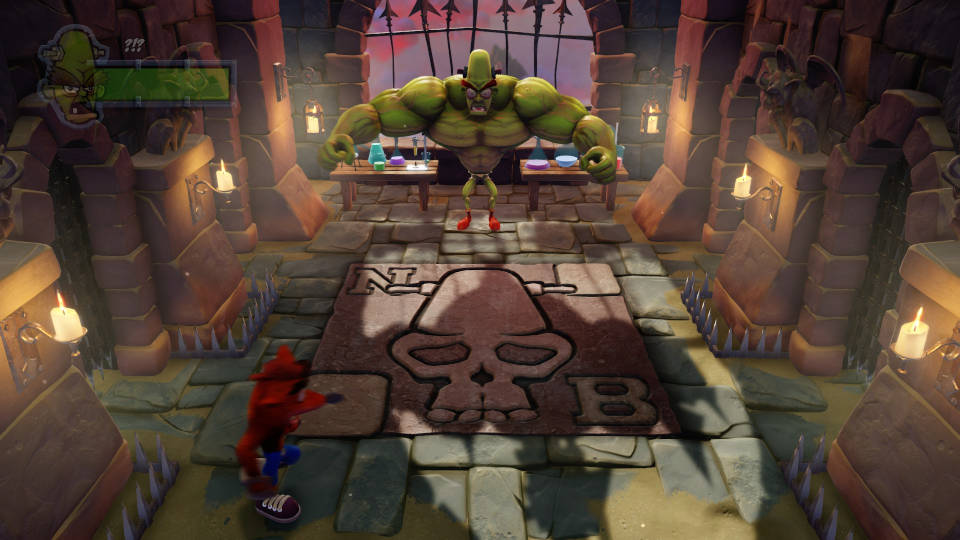
At the end of the day, Crash Bandicoot is an interesting historical curiosity, that continues to feel like a historical curiosity even in this updated version. Vicarious Visions has done a fantastic job giving the game a modern makeover, and if you played Crash Bandicoot back in the day, this is the beautiful HD version of the game you imagined in your head. From a functional perspective this is also the exact game you played in 1996. So if you have fond memories of Crash on PS1, you’ll enjoy this version. But therein lies the rub. If you didn’t play this game back then, or you’re too young to remember, I’m not sure this saccharine dose of sweet nostalgia is going to do much for you. It’s worth checking out, particularly if you enjoy exploring various branches of the platforming family tree, but just be aware Crash Bandicoot is like the oddball uncle in that family; quirky and lots of fun, but his glory days are well past him at this point.
Final verdict: 7 Ooga Boogas out of 10.
Leave a Reply